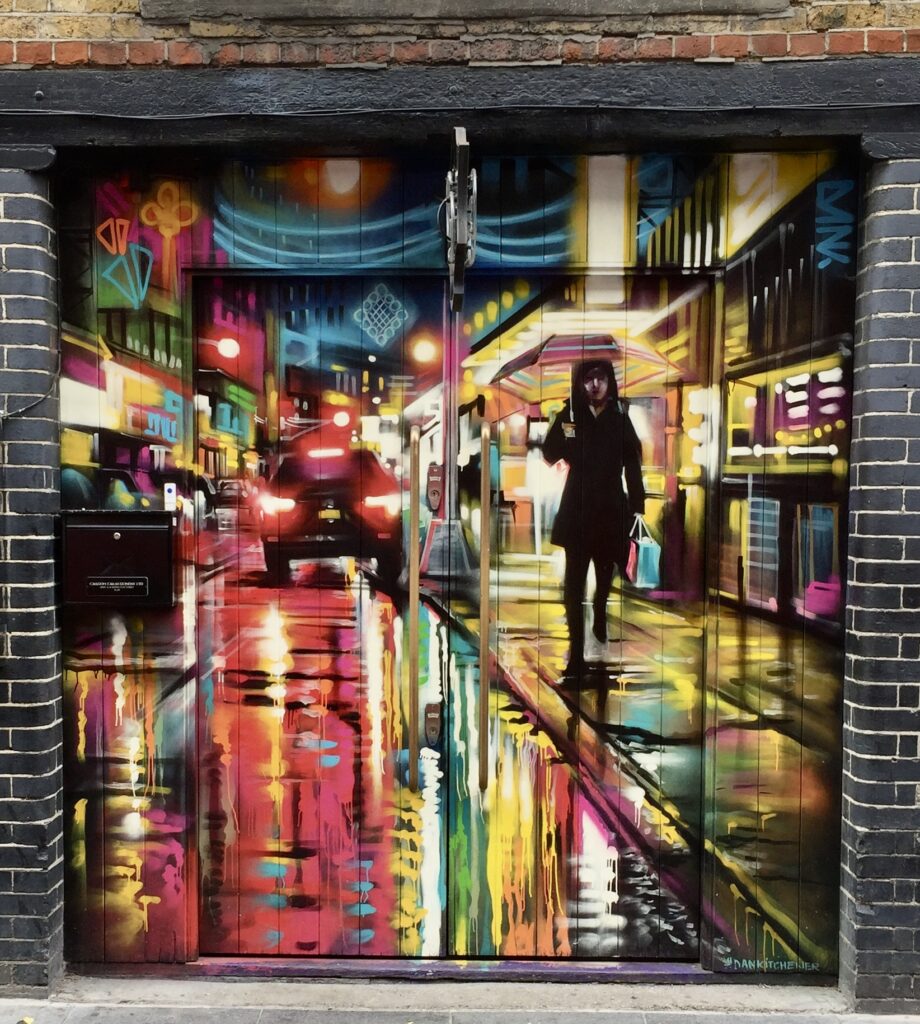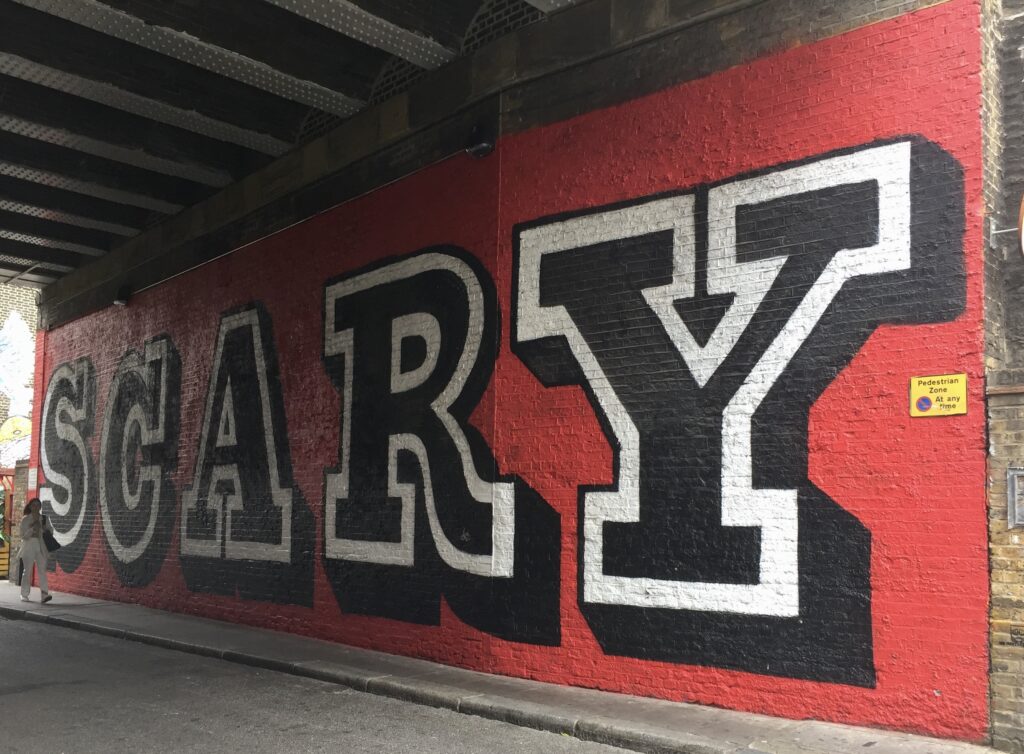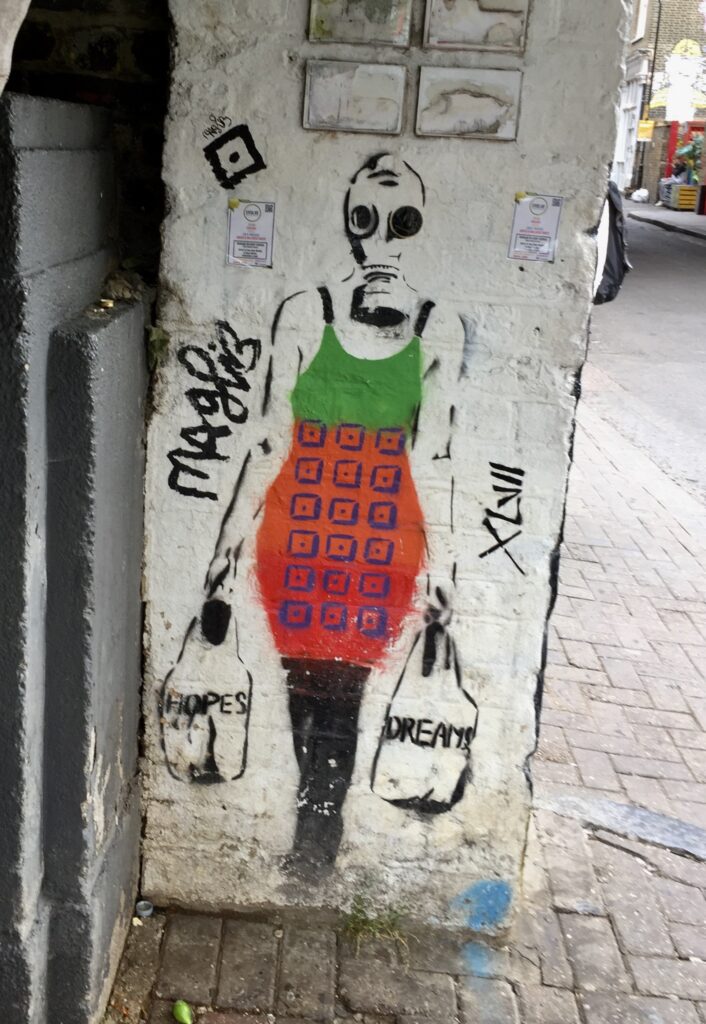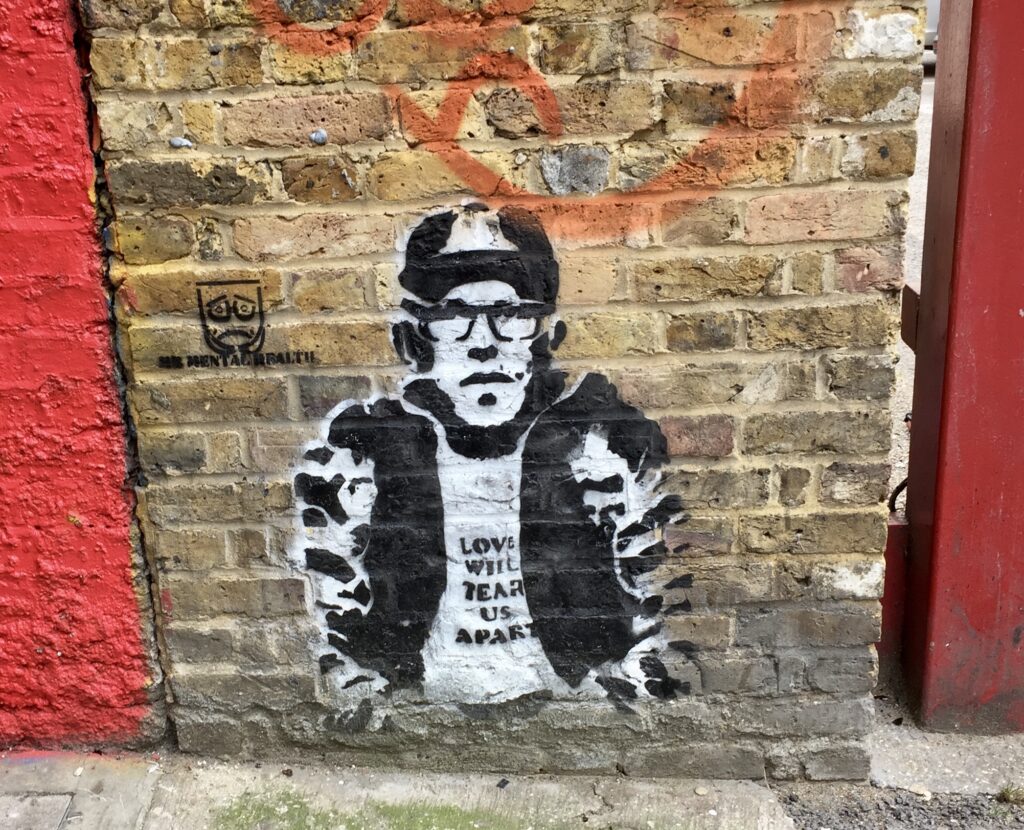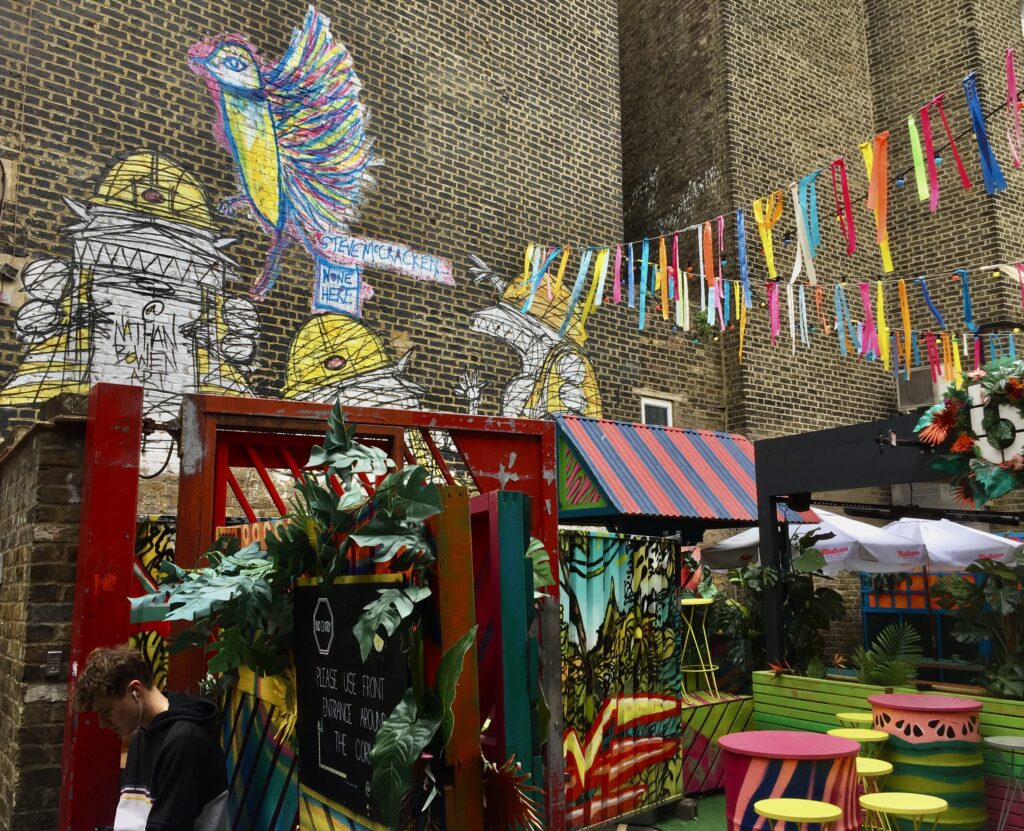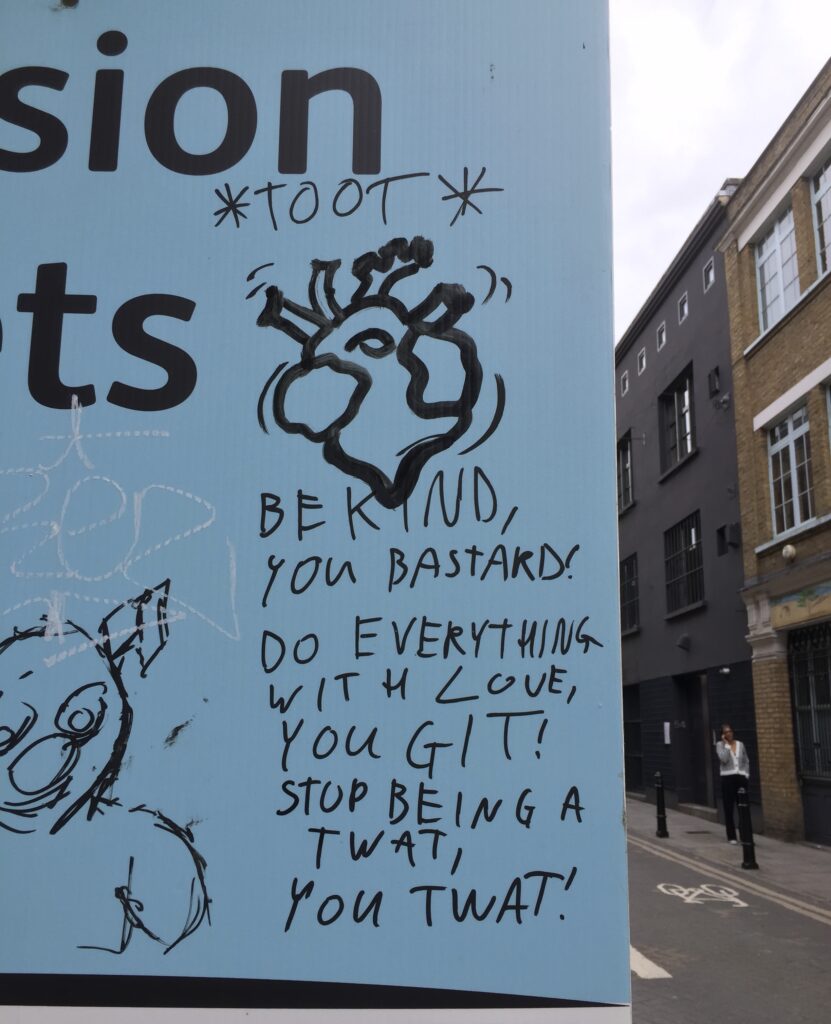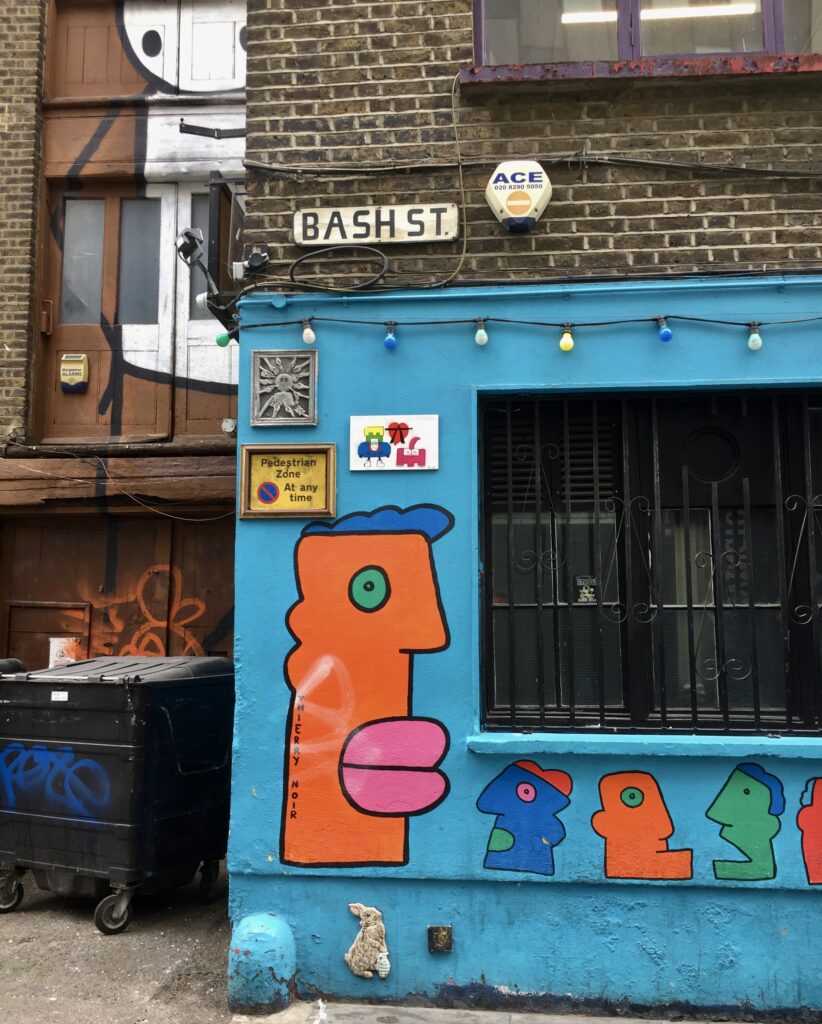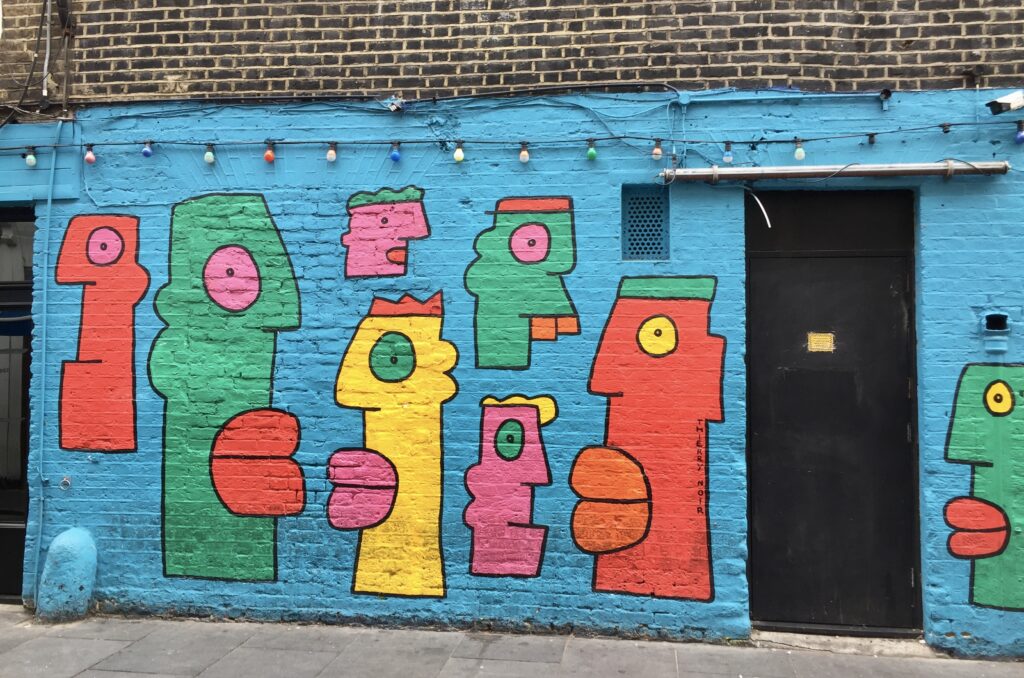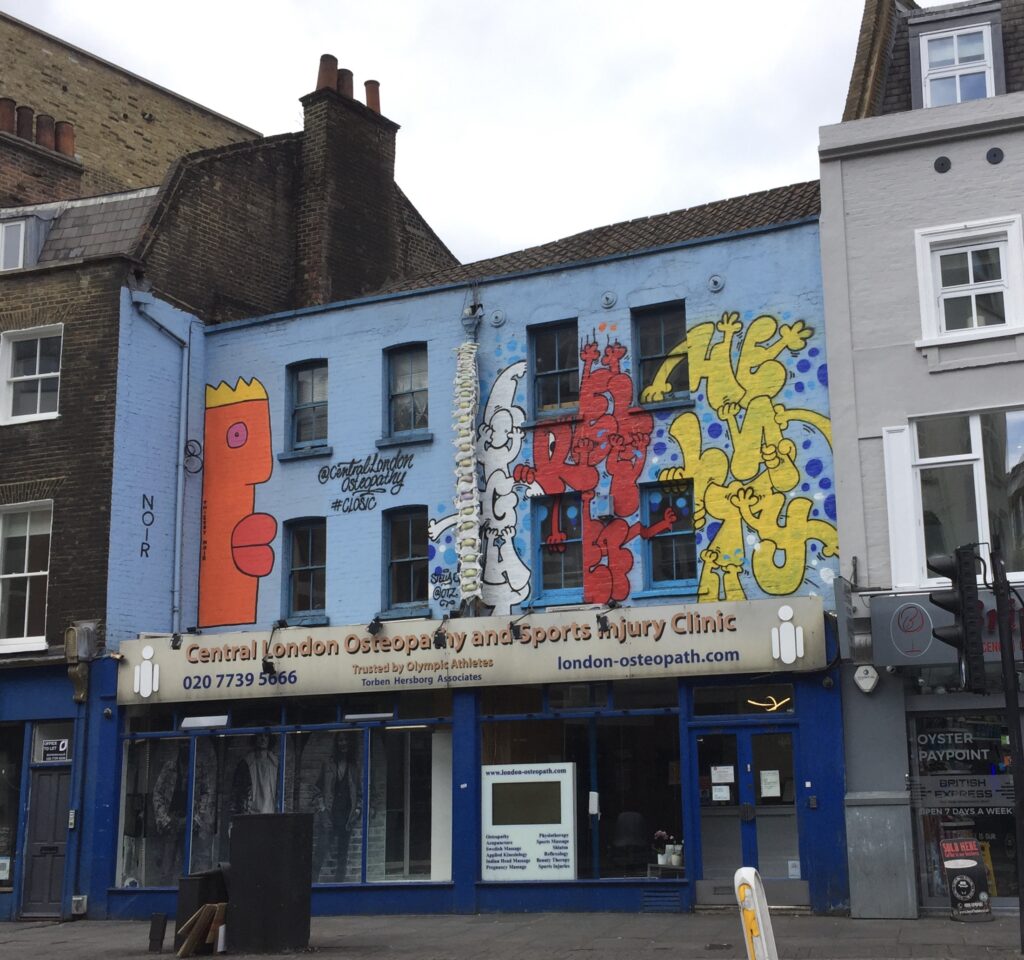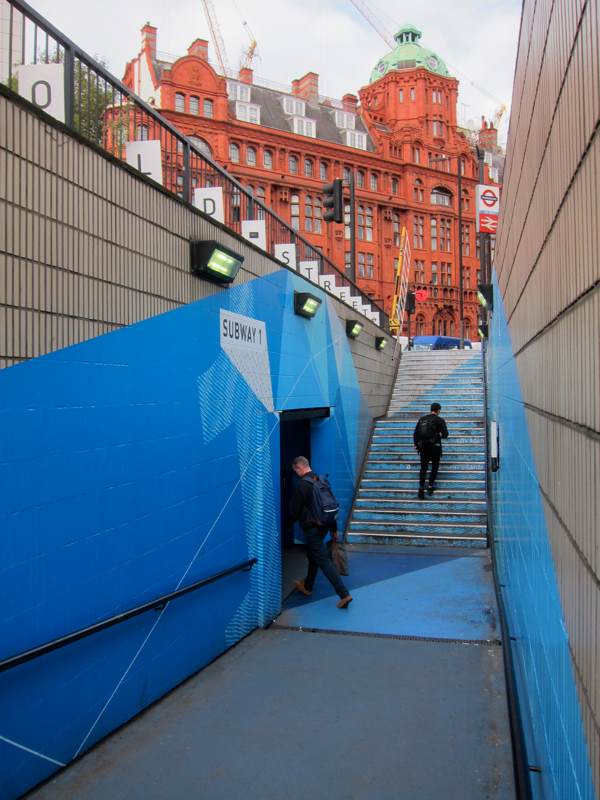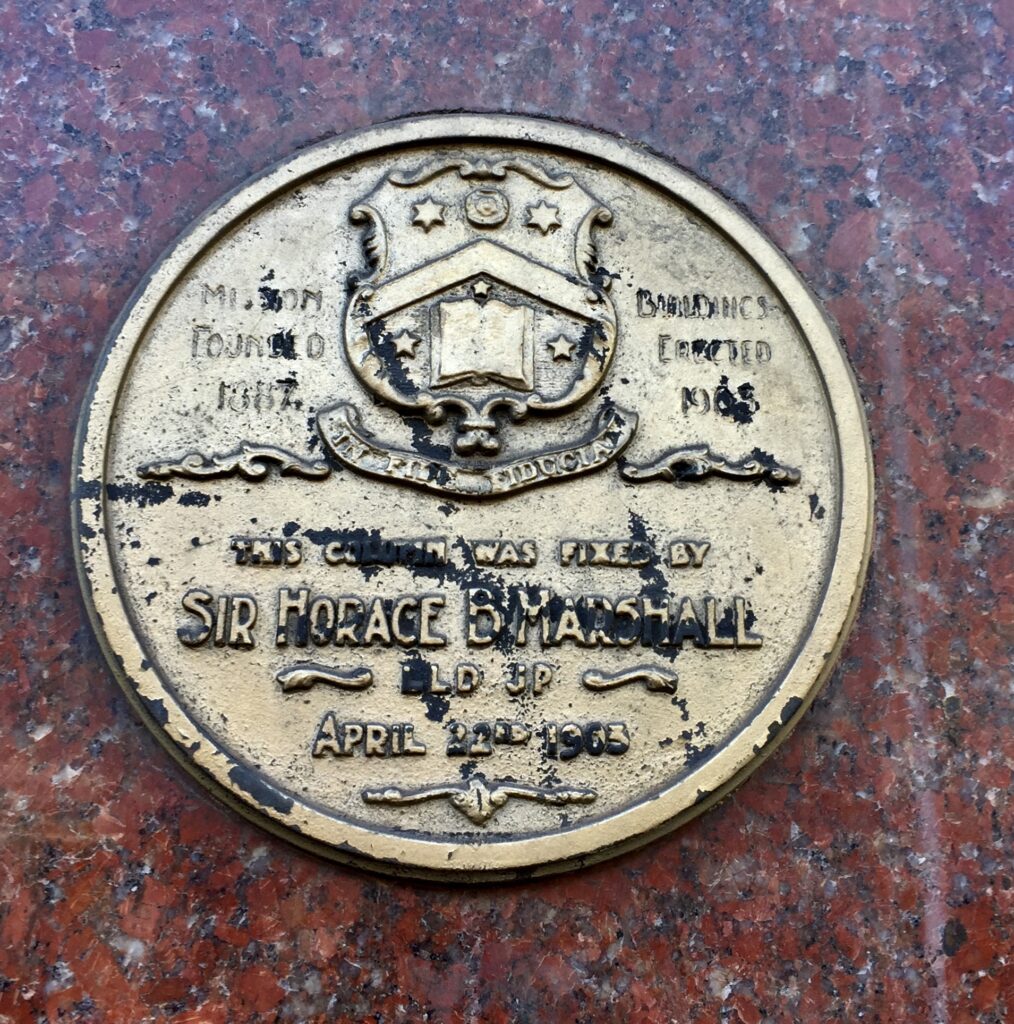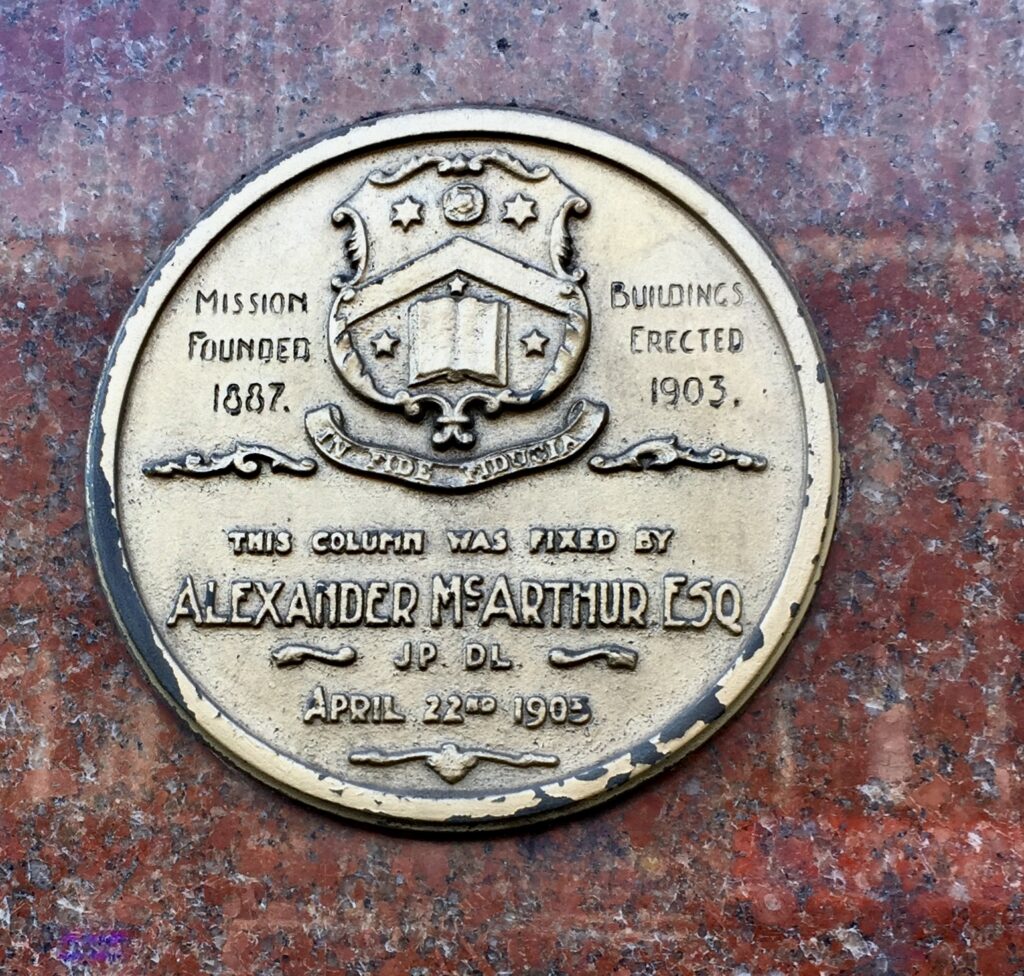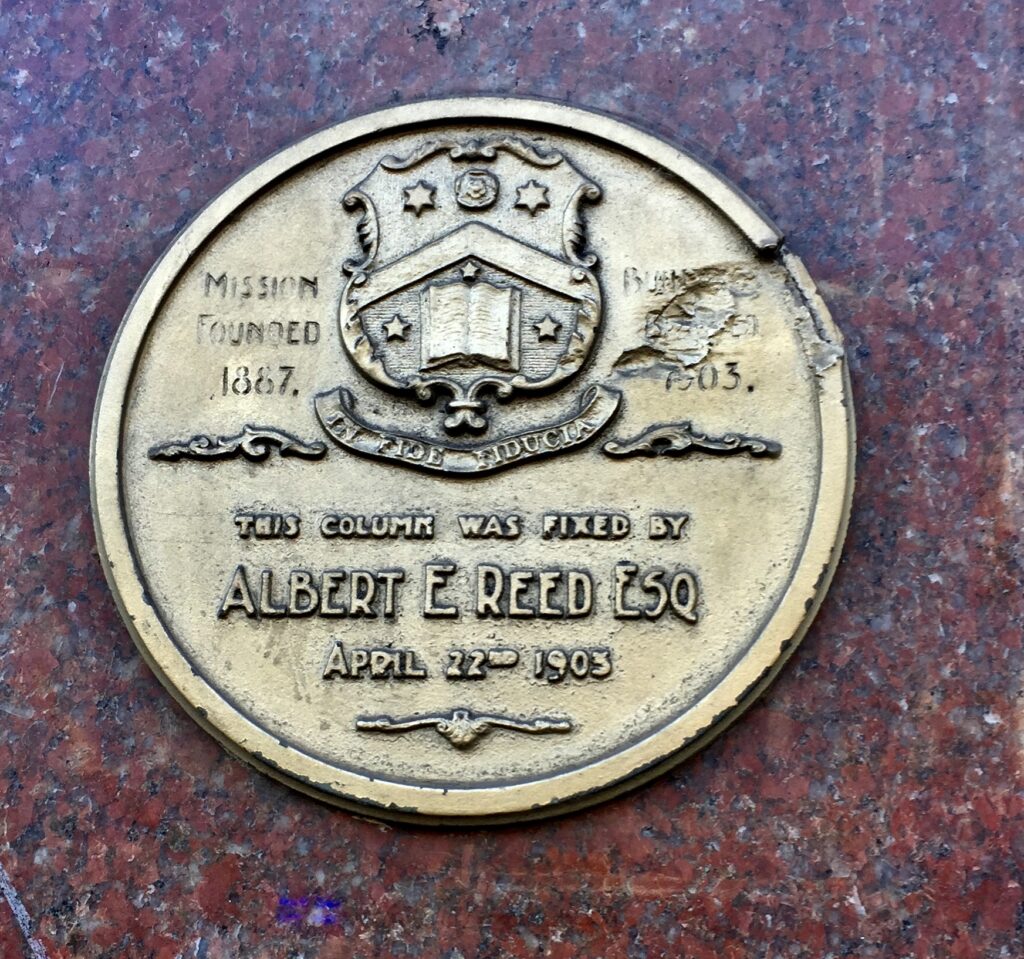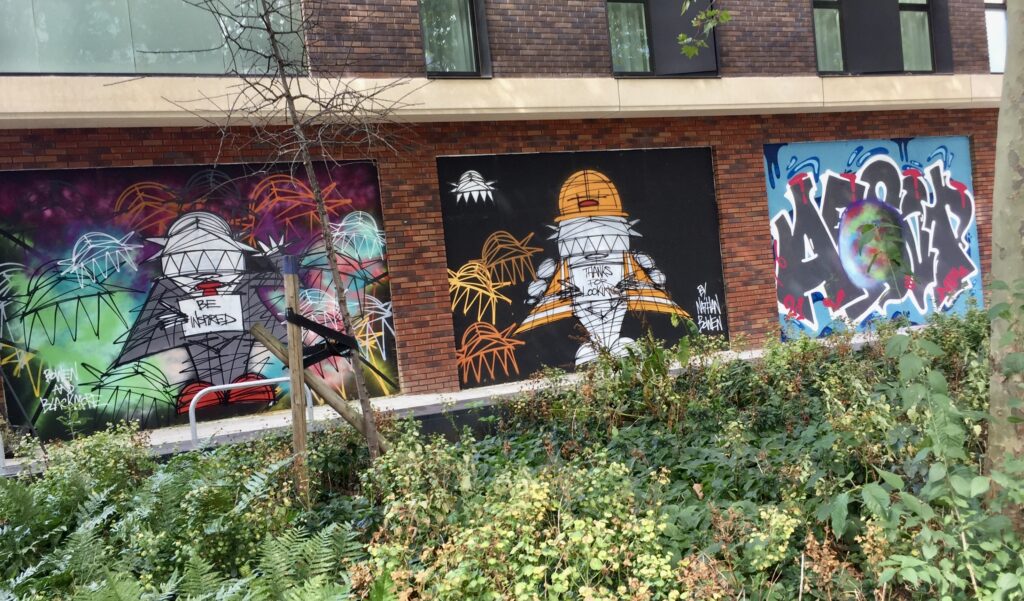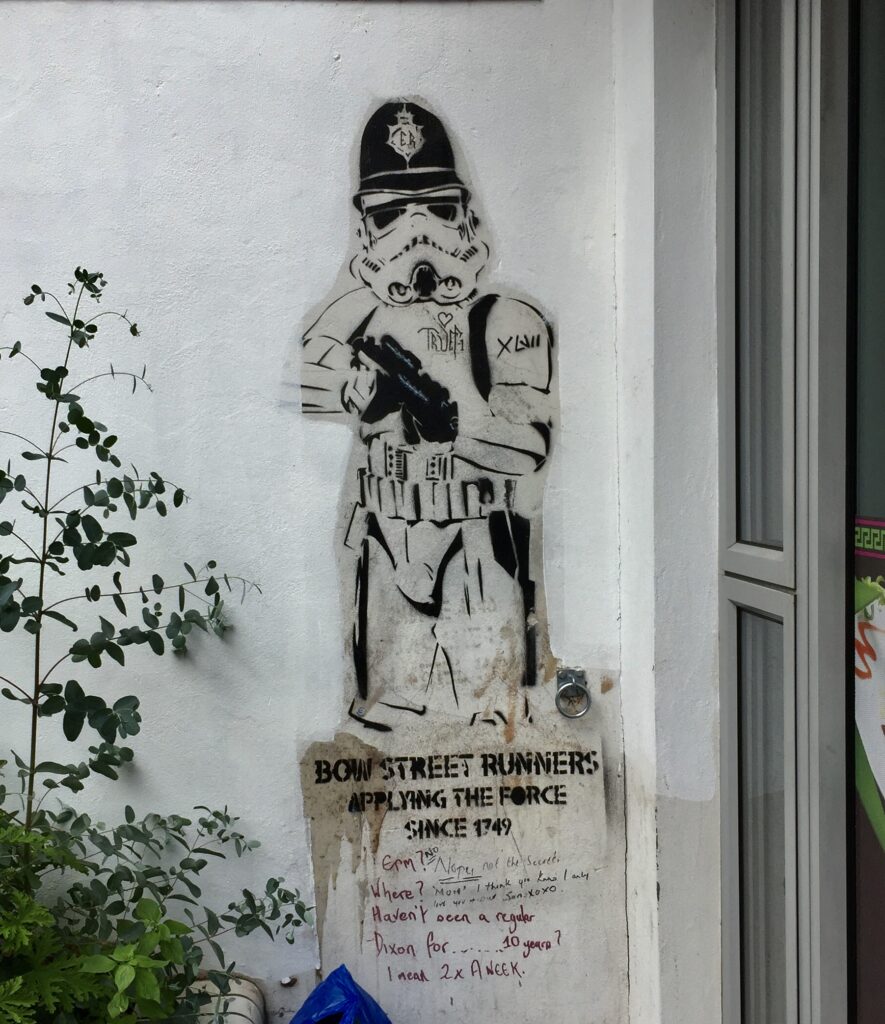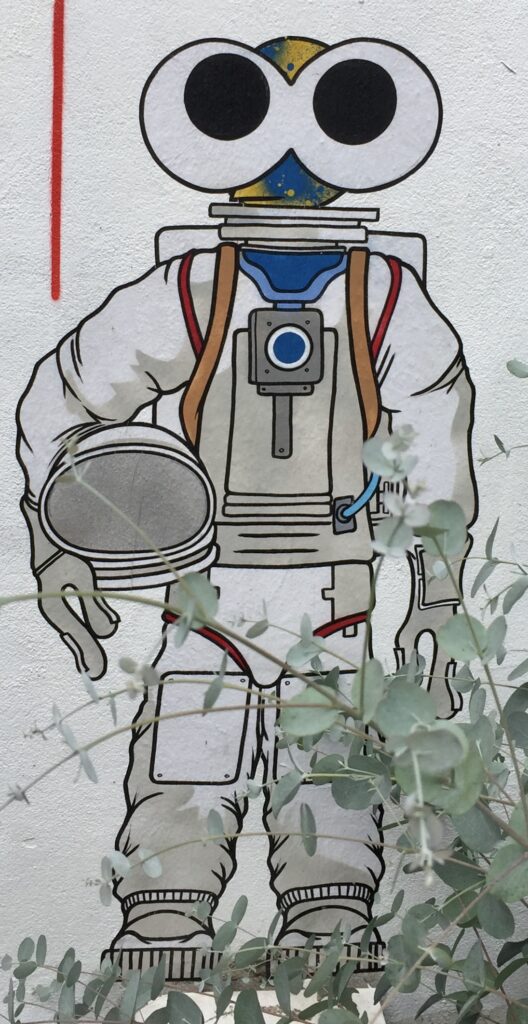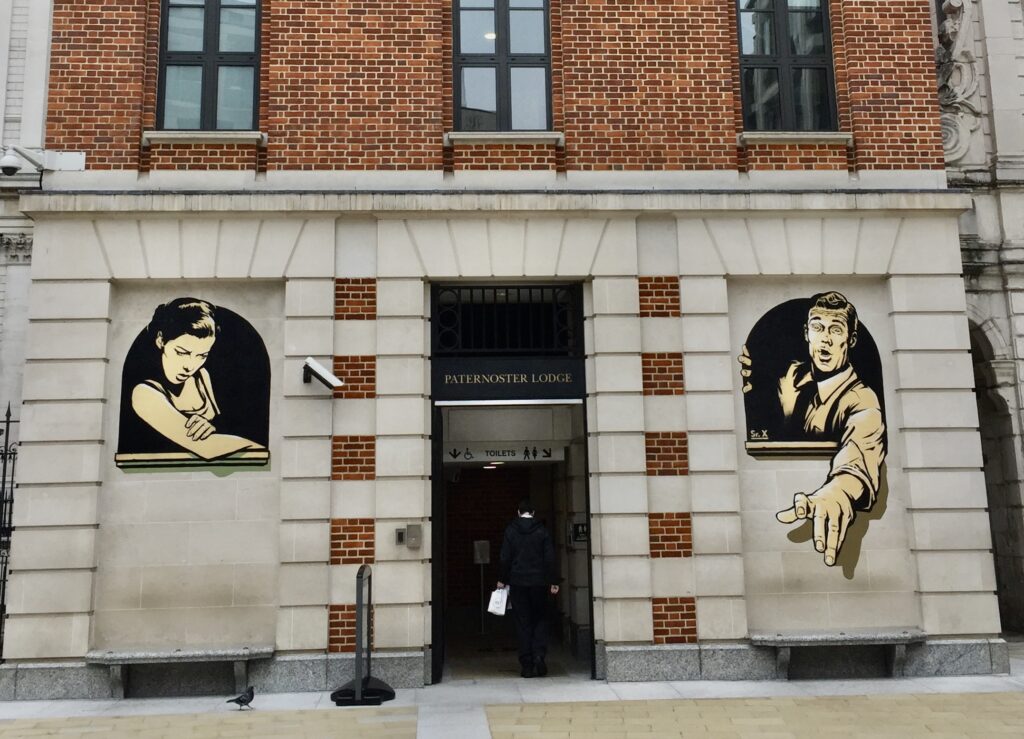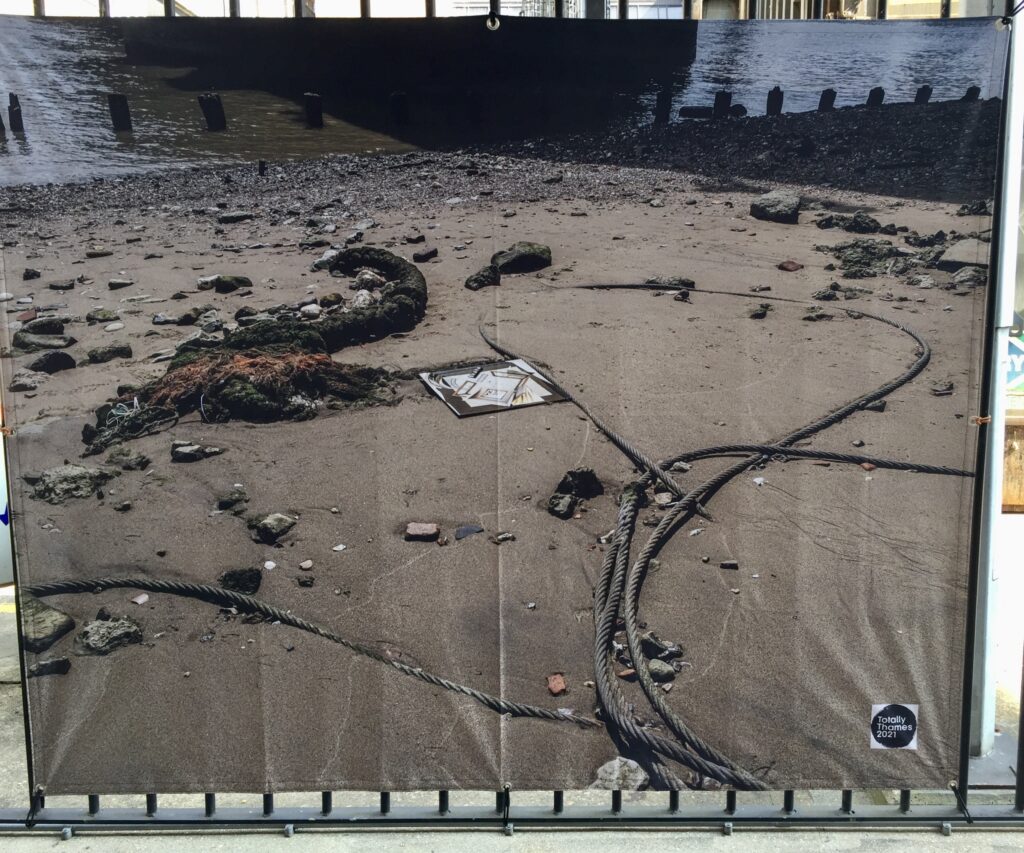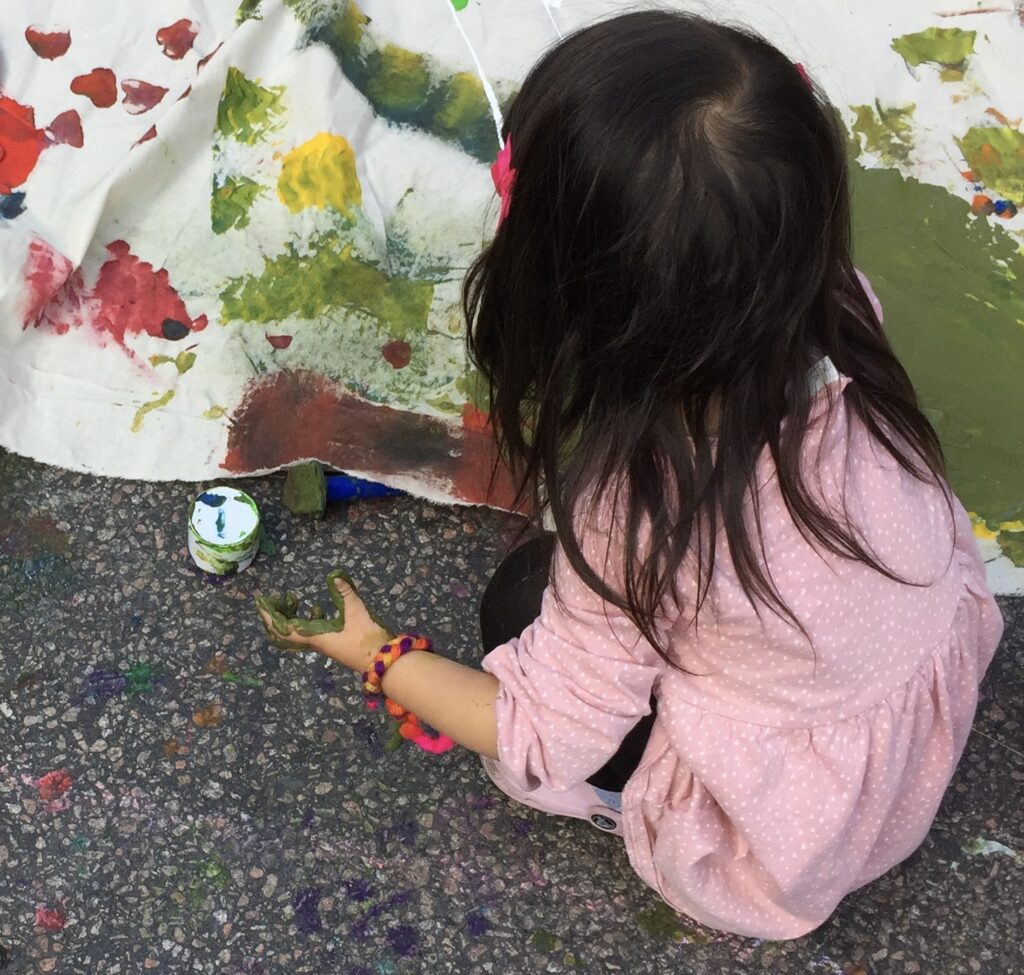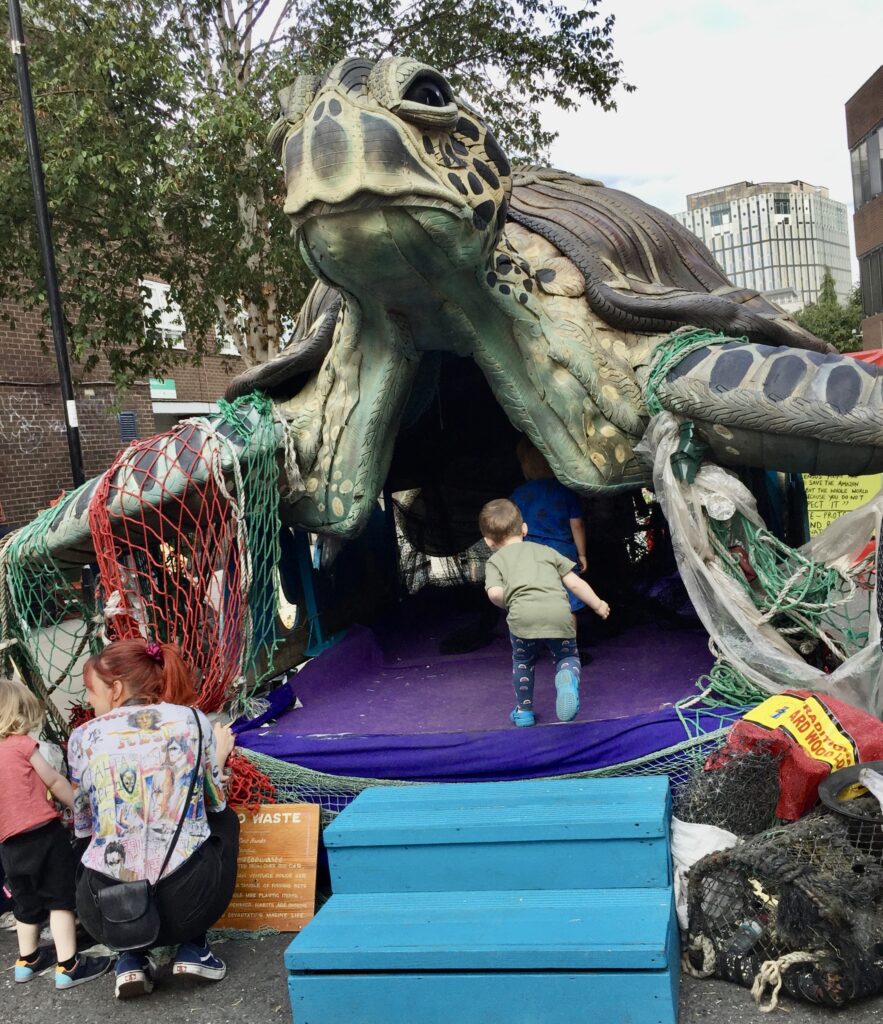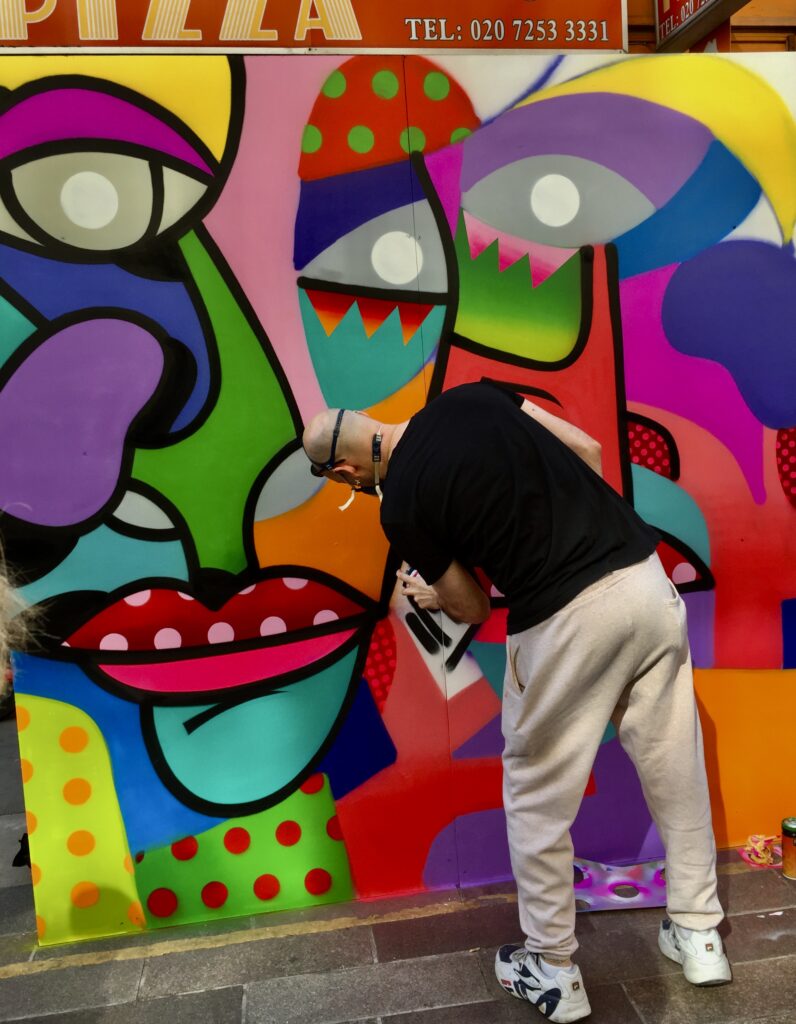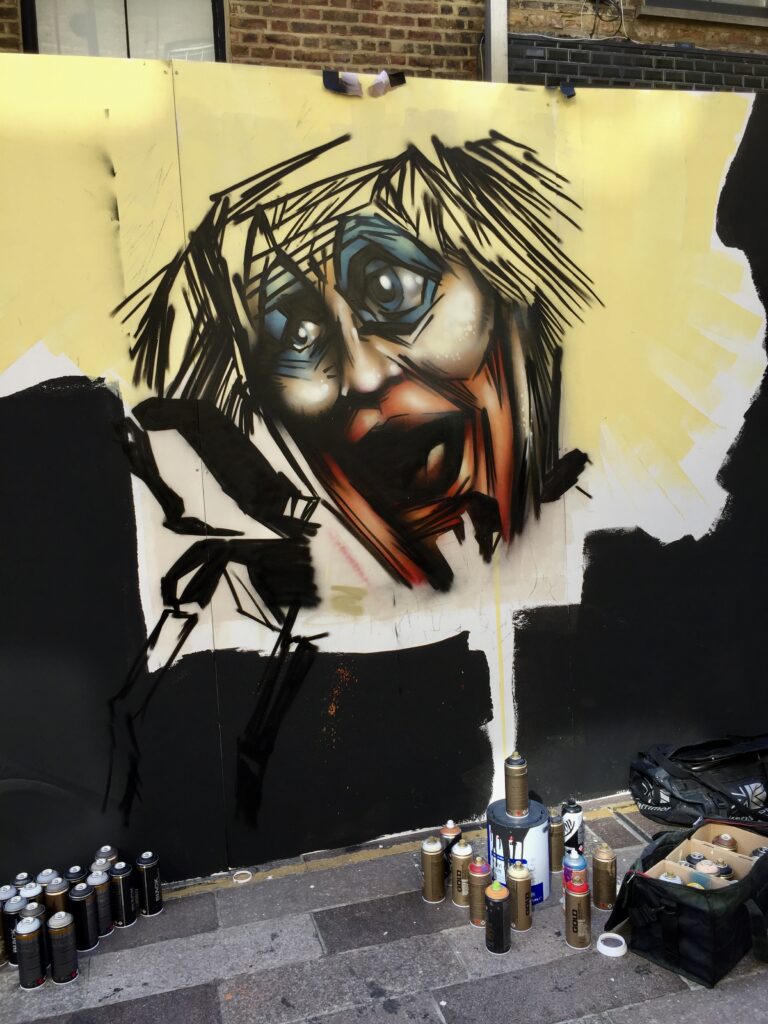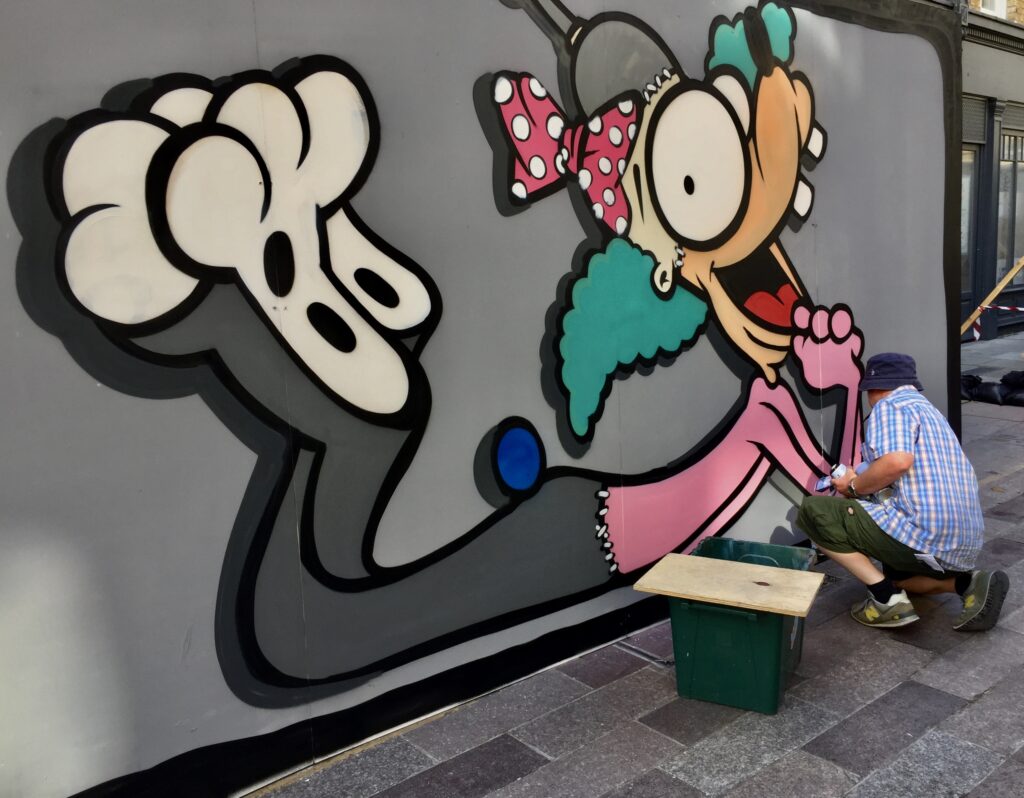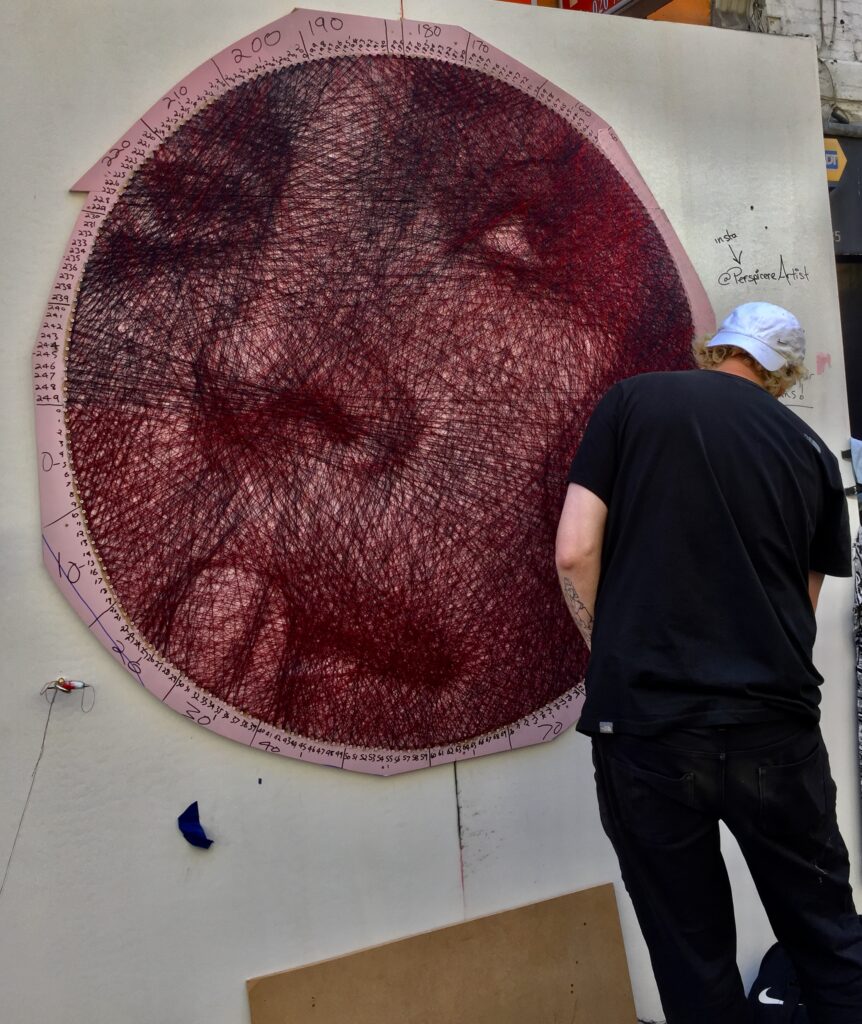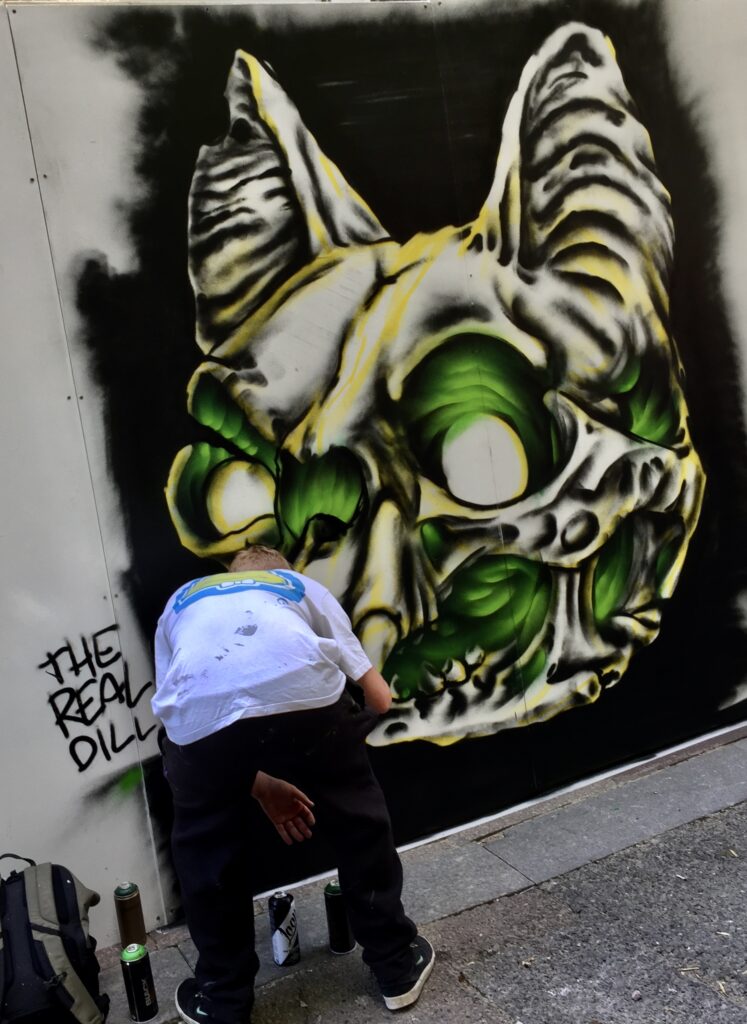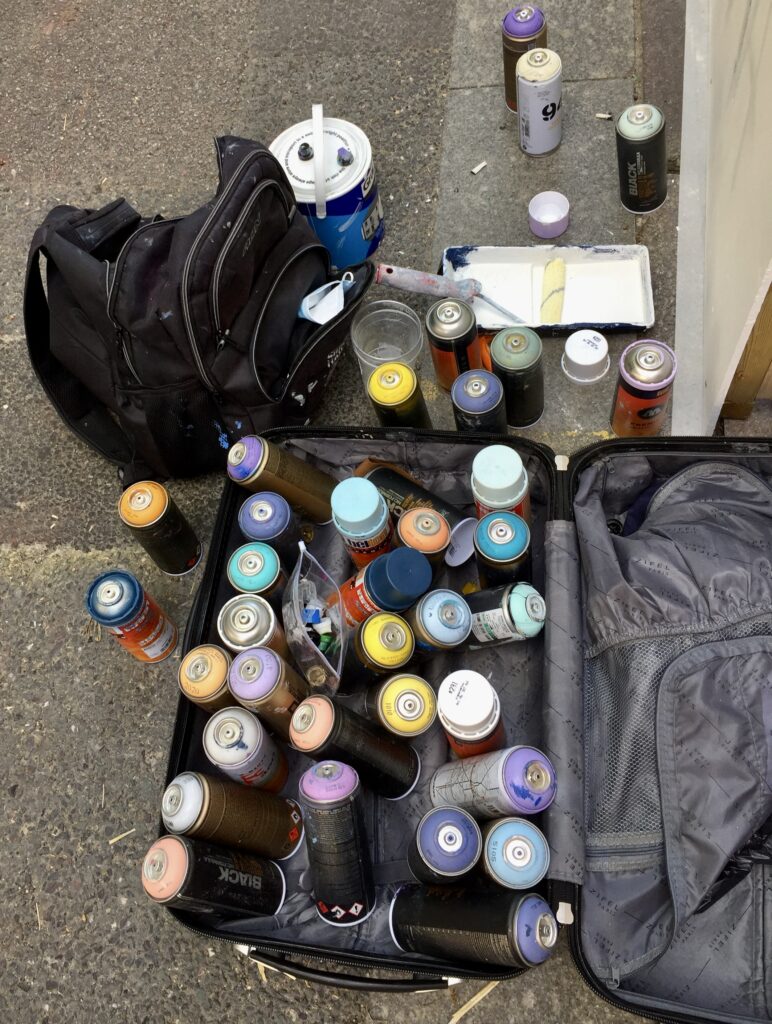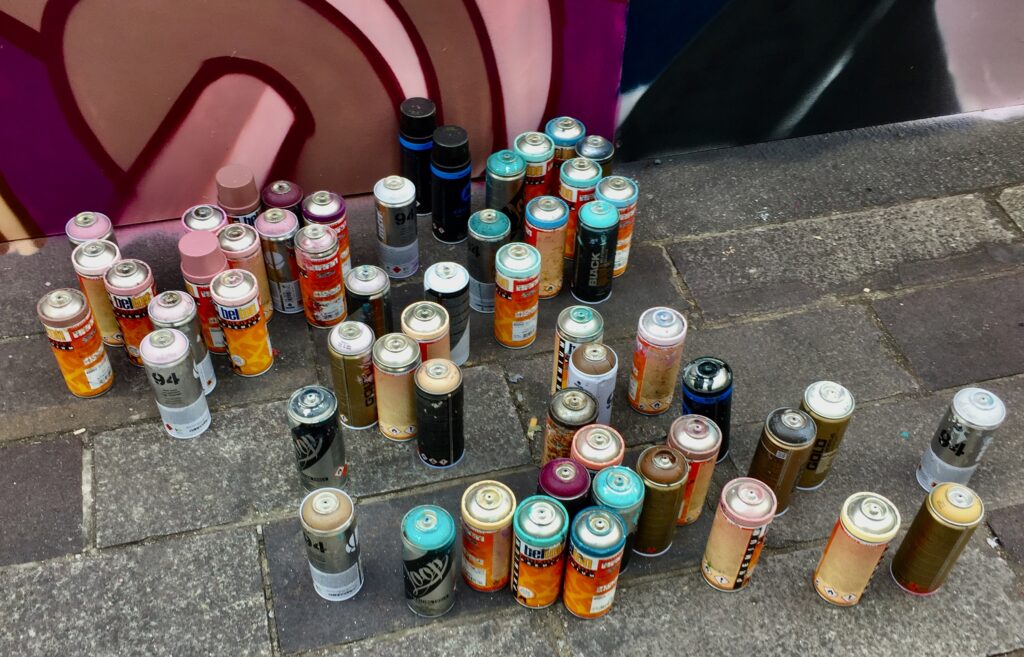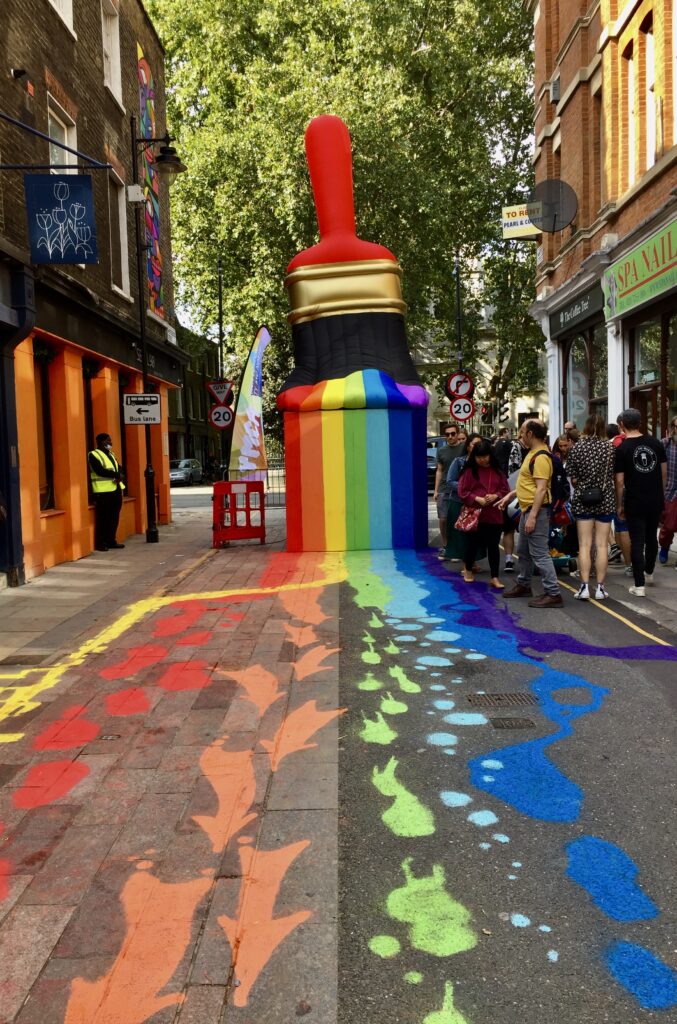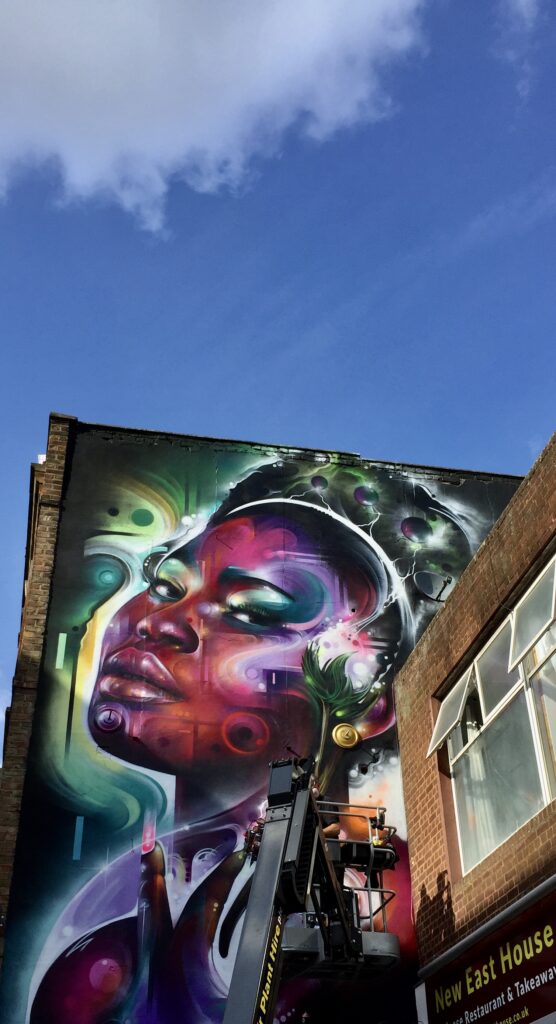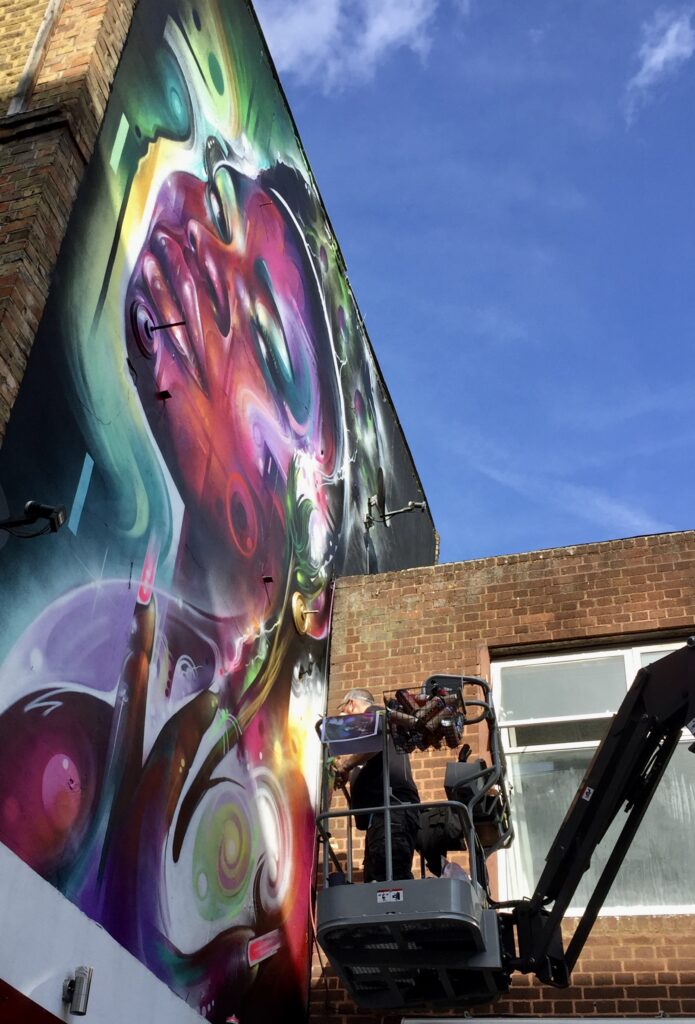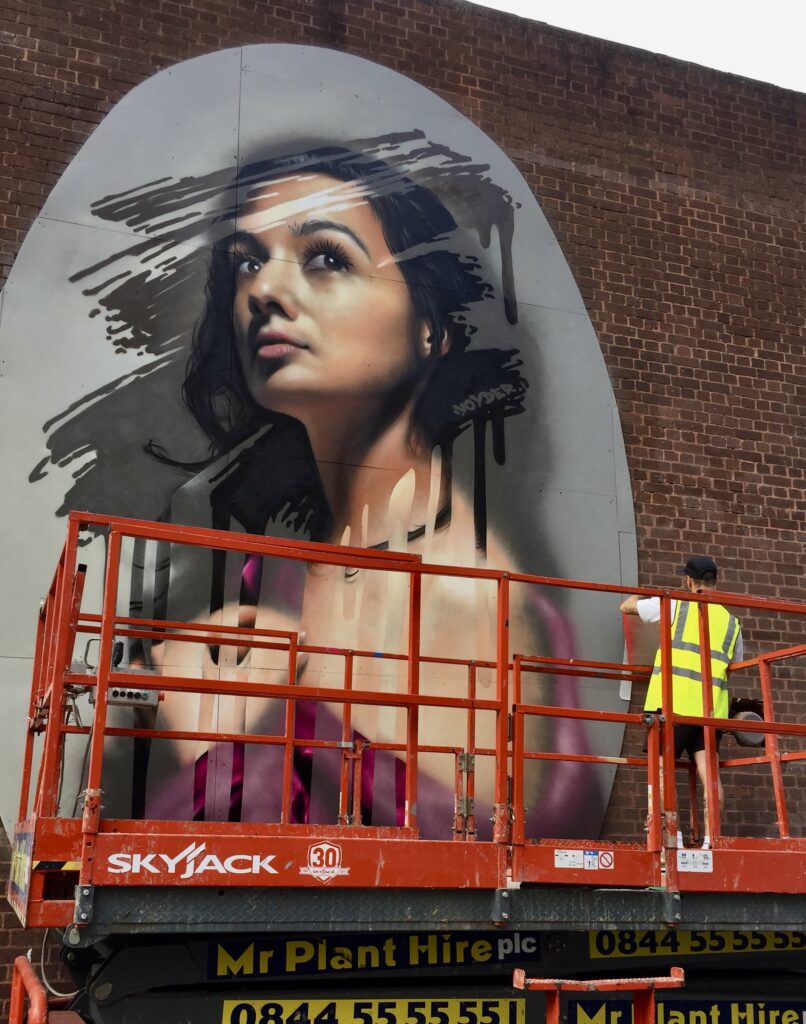Sculpture in the City is an annual sculpture exhibition that uses the City as a rotating gallery space. This is its 10th edition and will be in place until spring 2022.
I’m going to start with my absolute favourite …

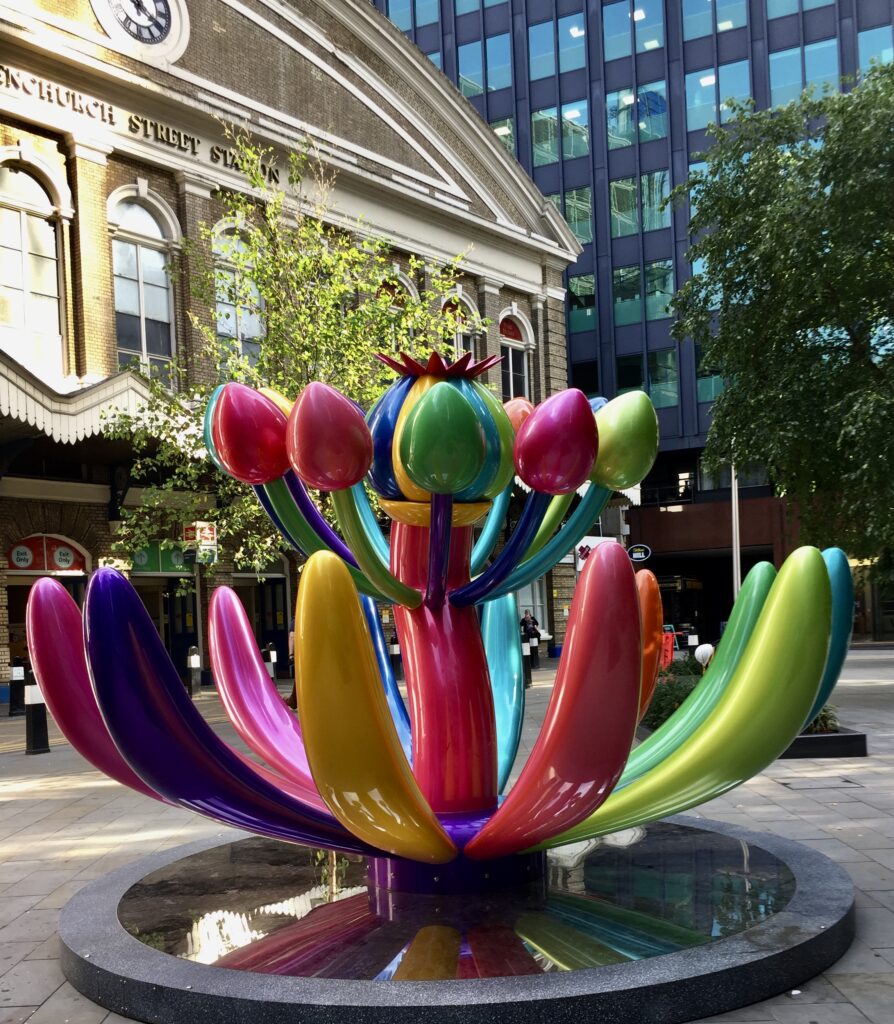

The nearby notes tell us that the sculptor Jun T. Lai ‘created Bloom Paradise to symbolize hope and love. The artist’s intention was to bring greater positivity into the pandemic stricken world and release healing energy. The bright and colorful flowers call to an imaginative world, leading the visitor into a fantasy wonderland. Through this work, the artist hopes to bring positive energy and joy, a gift of life, to everyone’.
I think she has succeeded brilliantly. What a lovely vision to encounter as you leave Fenchurch Street Station on your way to work.
When I first caught a glimpse of this clock on the Corner of Bishopsgate and Wormwood Street (EC2M 3XD) I was rather puzzled …
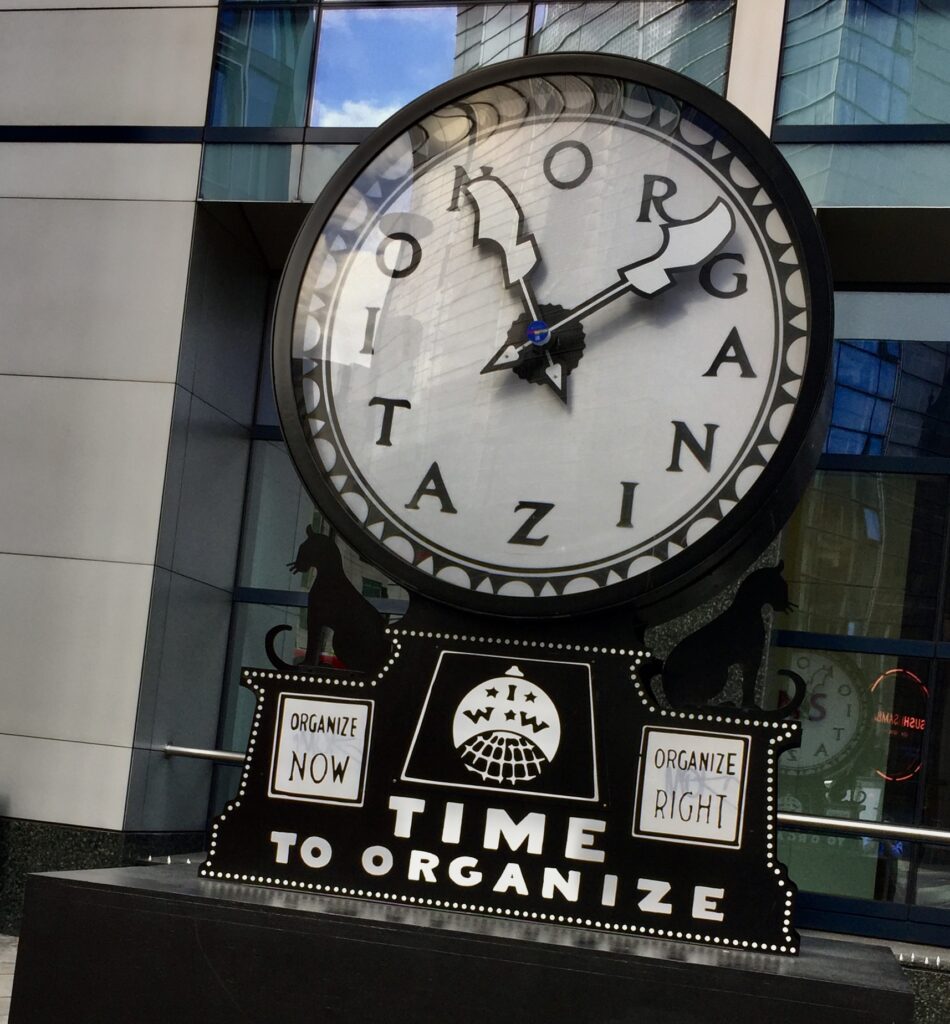
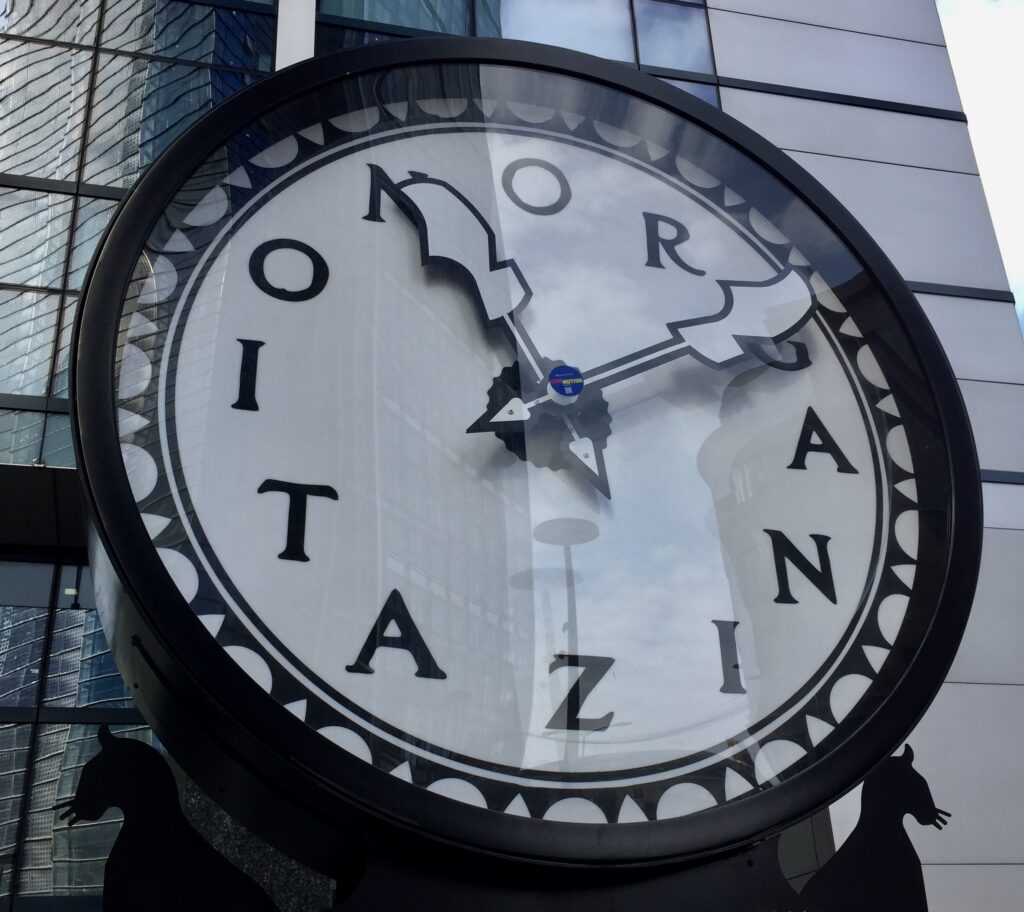
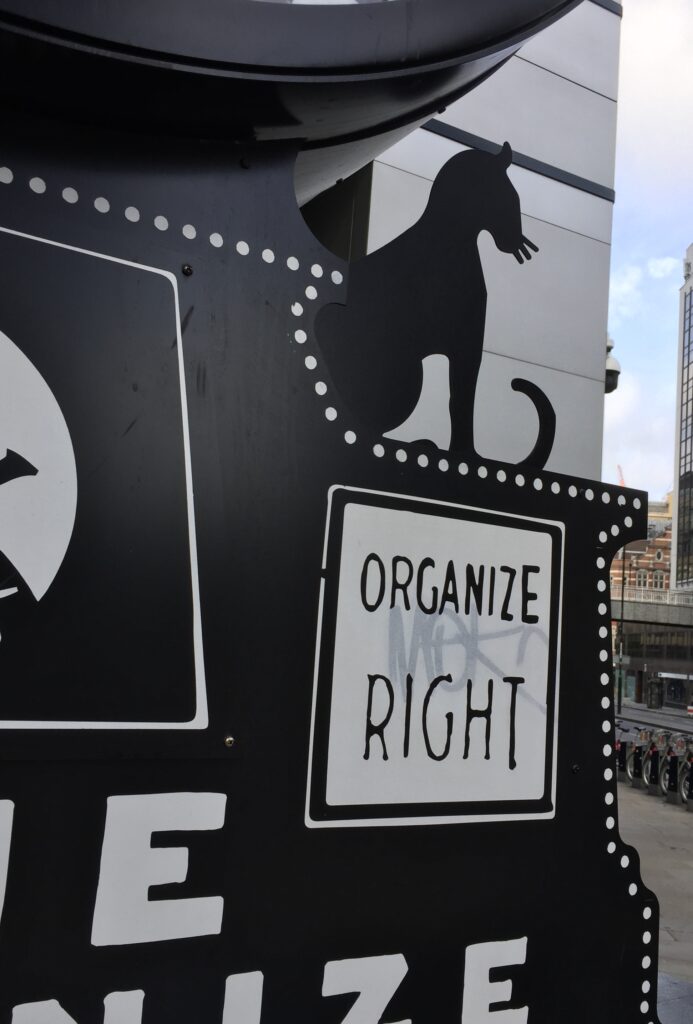
Now I know that Silent Agitator by Ruth Ewan is a large clock based upon a detail of an illustration produced by Ralph Chaplin in 1917 for the Industrial Workers of the World union (the IWW). Chaplin’s illustration, bearing the inscription ‘What time is it? Time to organize!’, was reproduced on millions of gummed stickers, known as ‘silent agitators’, that were distributed by union members in workplaces and public spaces across the US. The clock hands bear workers’ clogs or, in French, sabots from which the word sabotage is derived (sabotage was originally used in English to specifically mean disruption instigated by workers).
At Undershaft, EC3A 8AH (Next to St Helen’s Church) is Harlequin Four By Mark Handforth …
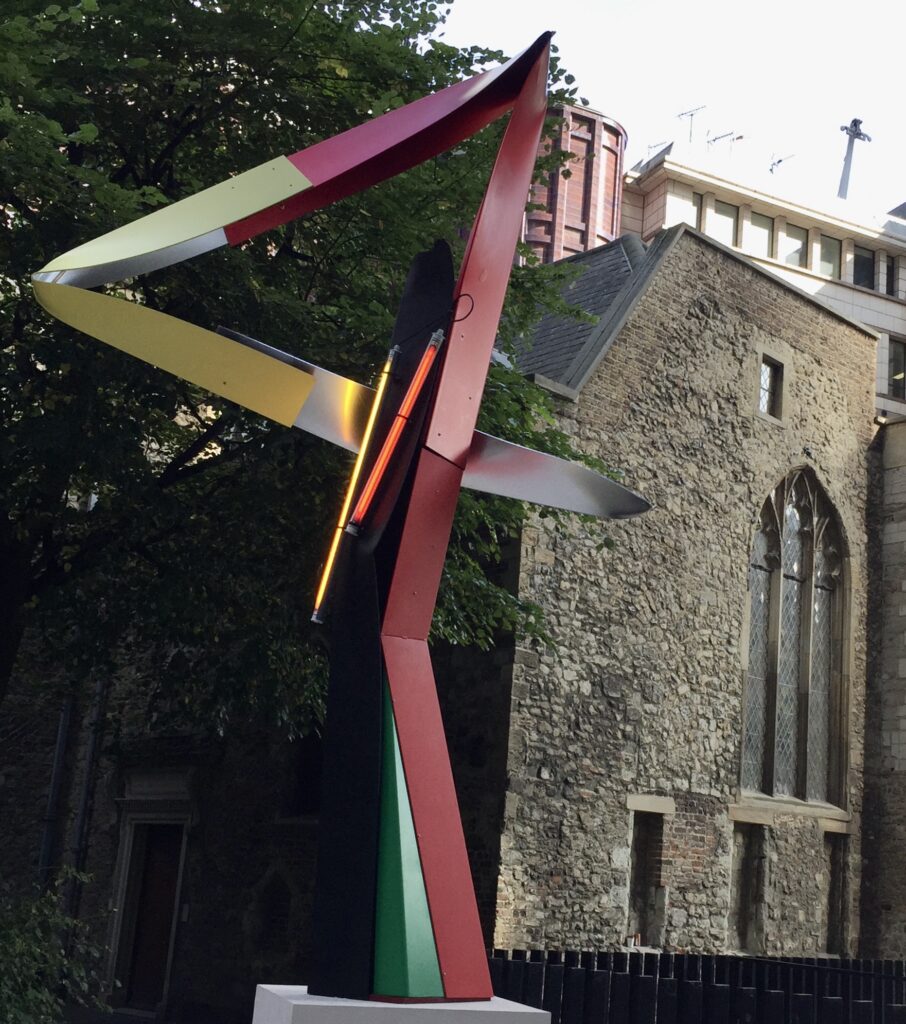
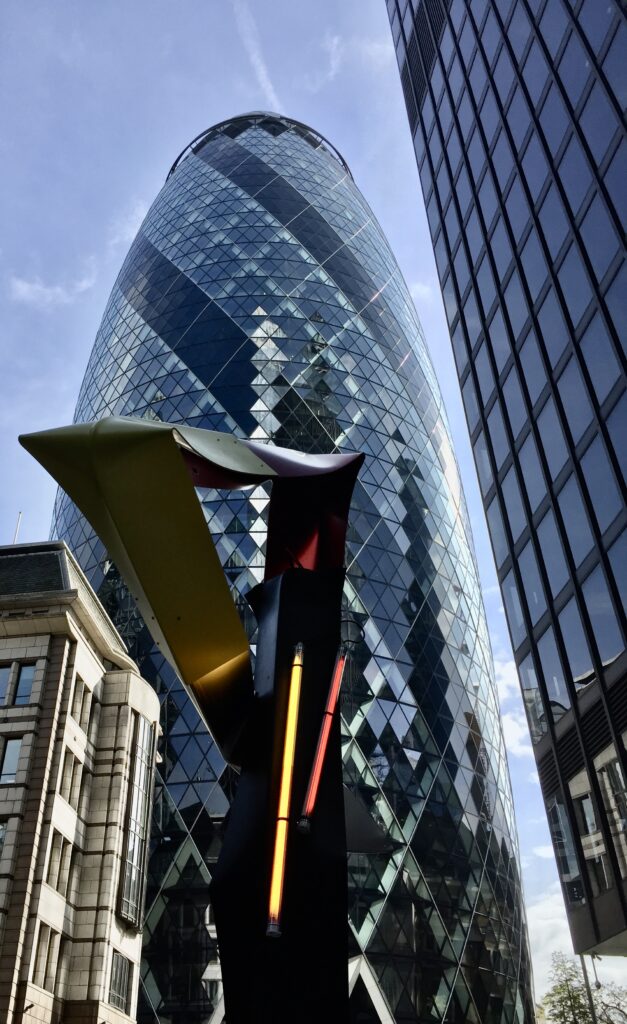
The descriptive notes state: ‘There is much symbolism in this number, for example it is considered a number of ‘being’, the number that connects mind-body-spirit with the physical world of structure and organisation’. Likewise, the use of lights is a commonality throughout his practice, in the form of candles, reflective neons and fluorescent lights. Handforth cites the way that the landscapes of artificial light that many of us live in, “means that night just becomes a different kind of day”.
Nearby at Undershaft, EC3P 3DQ (Between Aviva and the Leadenhall Building) is Cosmos by Eva Rothschild …
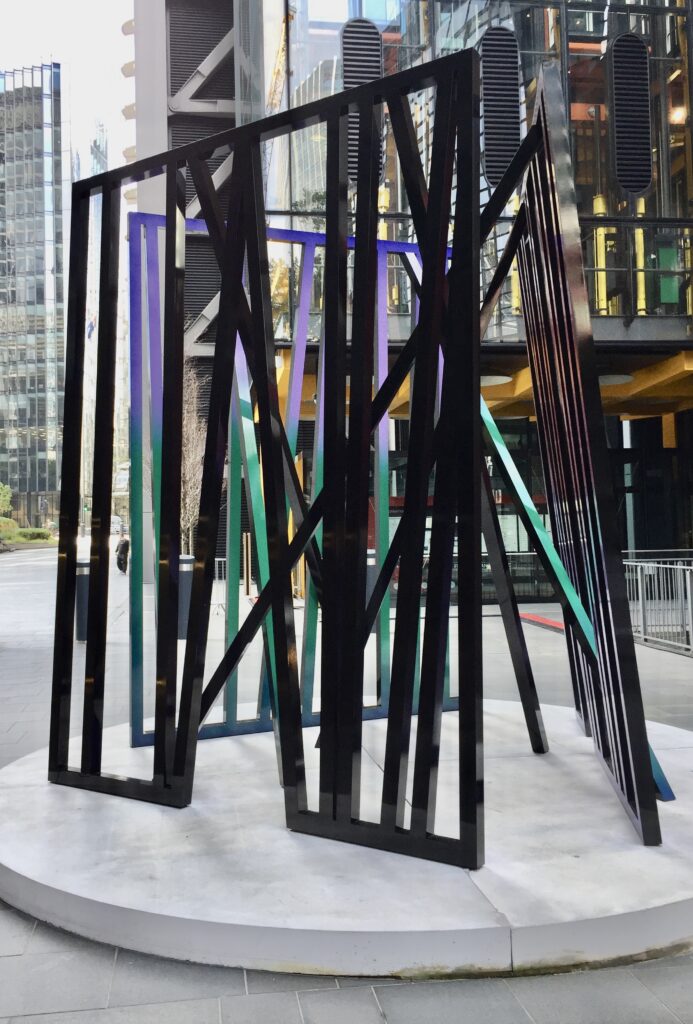
The work is composed of three 3.5 metre-high slatted structures which lean into and support each other, painted black on the exterior and sprayed in a coloured gradient within. An imposing physical structure, the work encourages both a physical and aesthetic response. Says Rothschild: “The external piece is quite forbidding. Its black shiny surface is like a set of disruptive gates.”
In Beehive Passage, Leadenhall Market (EC3V 1LT) is Symbols by Guillaume Vandame …
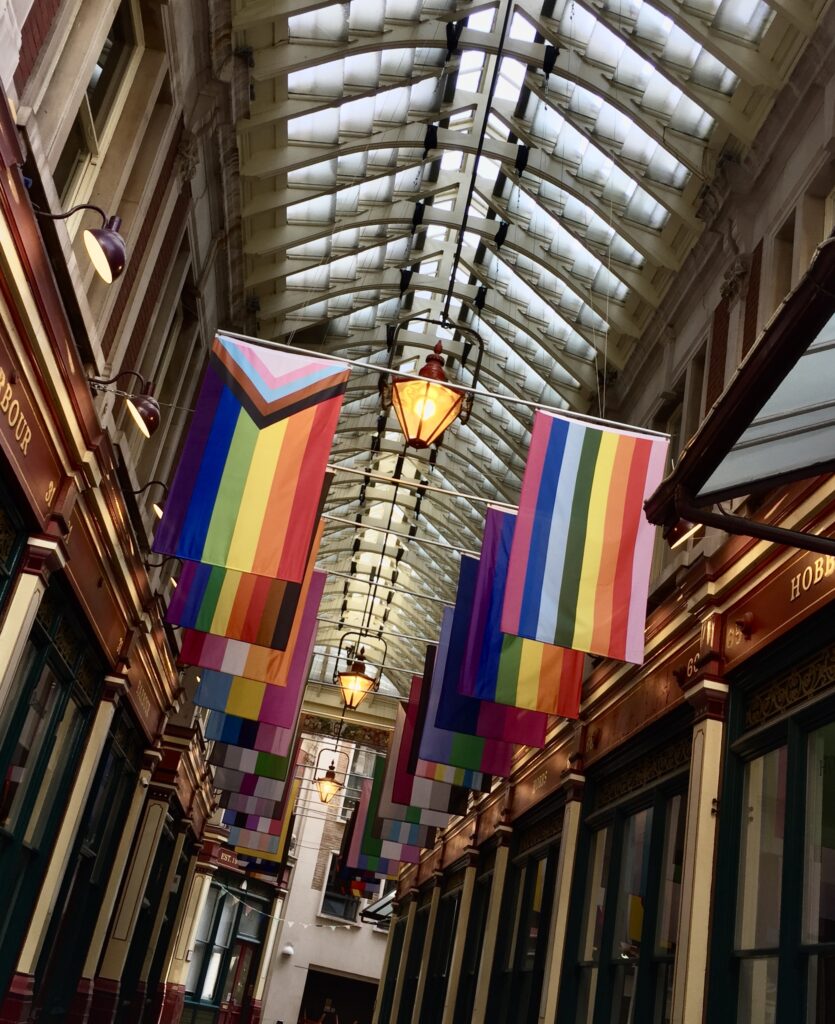
‘This is a sculptural installation consisting of 30 unique flags from the LGBTQ+ community. Spanning the original Pride Flag designed by Gilbert Baker in San Francisco in 1978 to its newest iteration by Daniel Quasar in 2018, the flags represent the diversity of gender, sexuality, and desire. The flags are standardised and ordinary, each five feet by three feet, and hang equidistant to represent the equal value and potential each community group has in the world today’.
And finally, Orphans, by Bram Ellens, a rather poignant work situated on Cullum Street (EC3M 7JJ) …

In Orphans, we see how the artist collected old paintings from deceased people to give them a new life …
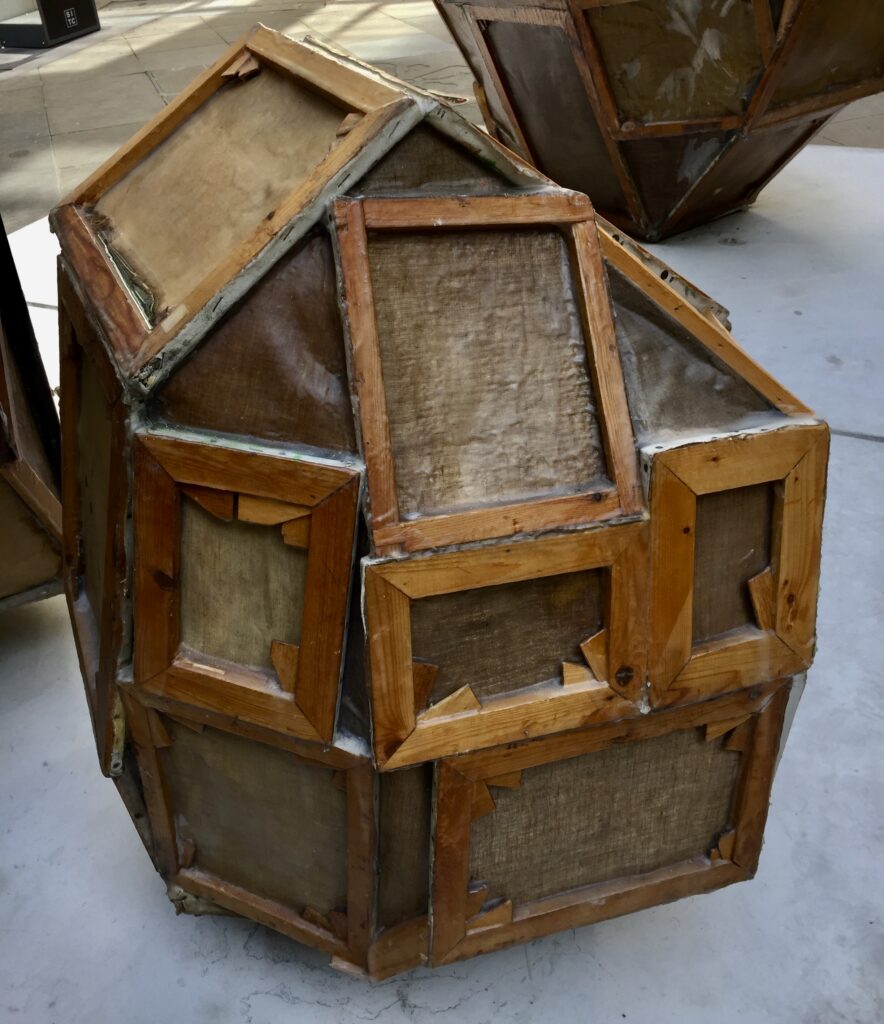
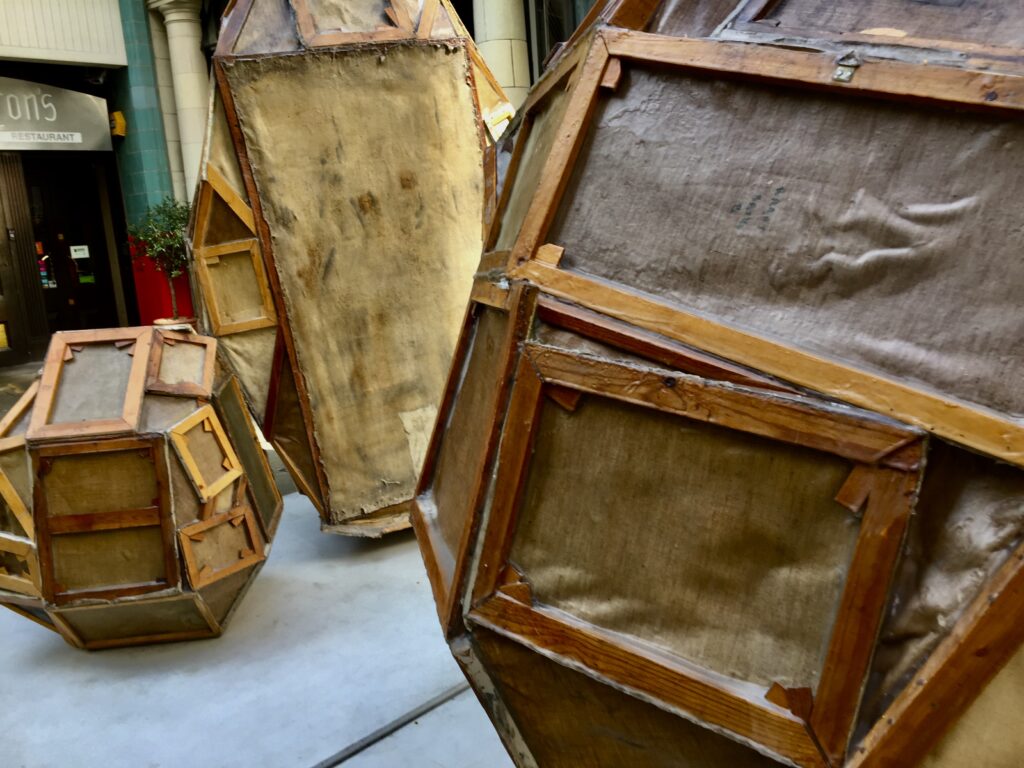
Through undertakers and thrift stores, he managed to lay his hands on paintings that had become ‘orphaned’ after their owner died and the art was discarded by their heirs.
All of these paintings that ended up in damp storage basements longing for a new owner, contained both the energy of the original artist as well as the attachment of the deceased owner.
The above are only six of the sixteen works you can discover around the City. More details are available here.
If you would like to follow me on Instagram here is the link …

